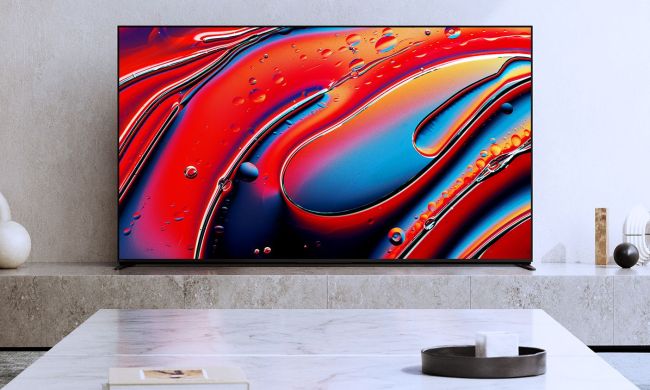Shopping for a new Sony TV can quickly become overwhelming. With models like the Bravia 2, 3, 5, 7, 8, and 9, along with newer “Mark 2” versions, it’s not always clear what each one offers or how they differ from each other.
Sony’s naming system and evolving panel technologies can be confusing, especially when models from previous years are still available alongside the latest releases. Understanding the differences between LCD, mini-LED , OLED , and QD-OLED panels is key to making the right choice.
This guide breaks down the current Bravia lineup, explains what makes each model unique, and offers insight into where Sony is headed next. Whether you’re a casual viewer or a home theater enthusiast, having a clearer picture of Sony’s TV strategy can help you find the right fit for your space.
Bravia 2 II: Entry-Level Made Smarter

The Bravia 2 II is Sony’s newest true entry-level model, positioned just below the Bravia 3 in both price and performance. Designed for casual viewers or secondary rooms like bedrooms and offices, this TV offers the basics without sacrificing Sony’s signature processing quality.
It features a standard 60 Hz panel and edge-lit LED backlighting. While it won’t compete with higher-end models on brightness, contrast, or gaming features, it still benefits from Sony’s XR processing to improve image clarity and motion handling compared to other TVs in its class.
The Bravia 2 II is also one of the lightest and most energy-efficient models in the lineup, making it ideal for wall mounting or smaller living spaces. It lacks advanced features like local dimming or wide color gamut, but delivers solid picture quality for everyday viewing.
Bravia 3: Entry-Level LED

The Bravia 3 is a step up from the Bravia 2 II, thanks to its more advanced direct-lit LED backlighting. However, it still lacks the local dimming found in more expensive models. Peak brightness hovers around 500 nits in test patterns and it benefits from Sony’s excellent processing.
That said, the Bravia 3’s contrast is limited by its always-on backlight, which can make blacks appear gray. Still, for Sony loyalists looking for a budget-friendly option, the Bravia 3 delivers.
Note: This model is a carryover from 2024.
Bravia 5: Mini-LED at a Mid-Tier Price

The Bravia 5 is Sony’s most affordable mini-LED TV and a clear step up from its entry-level models. It features full-array local dimming with XR Backlight Master Drive, delivering significantly improved contrast and brightness control compared to standard LED panels.
This model includes a native 120 Hz panel, supports variable refresh rate (VRR), and is compatible with Dolby Vision and Dolby Vision for gaming. It’s also equipped with Sony’s XR Processor for advanced image clarity and motion handling. Estimated peak brightness is between 1,200 and 1,500 nits, impressive for its tier.
With HDMI 2.1 support, Auto Low Latency Mode (ALLM), and a dedicated Game Menu, the Bravia 5 is a compelling choice for gamers and home theater enthusiasts alike. It strikes a strong balance between performance and price, making it a standout mid-range option in Sony’s 2025 lineup.
Bravia 7: High Performance Mini-LED

The Bravia 7 , another carryover from 2024, holds its own as a top-tier mini-LED option. Delivering around 2,000 nits of peak brightness, it competes directly with models like the Samsung QN90F.
Color accuracy is outstanding in Professional Mode, and image quality overall is clean and impressive. The only downsides are slightly diminished off-angle viewing and a modest anti-glare coating—though many viewers report it works just fine.
Bravia 8: WRGB OLED

The Bravia 8 series represents Sony’s take on premium OLED, offering a balance between performance and price. The original Bravia 8 (or Mk I) uses a WRGB OLED panel and sits in the same category as LG’s C-series OLEDs. It’s available in 55-, 65-, and 77-inch sizes, and for many users, it delivers a near-flagship experience with excellent black levels, rich color, and Sony’s signature image processing.
While it doesn’t push brightness as far as QD-OLED or high-end mini-LED models, it remains a popular option for those who prioritize cinematic picture quality and deep contrast over raw peak brightness. It’s also the only way to get a 77-inch OLED from Sony outside of the more expensive QD-OLED tier.
Bravia 8 Mark 2: OLED Evolves

Now enter the Bravia 8 Mark 2, which upgrades to a QD-OLED panel. This new model represents the cutting edge of Sony’s OLED tech but doesn’t take the “Bravia 10” name. That’s because Sony still considers the Bravia 9 its flagship.
This naming choice might be unconventional, but Sony is likely betting that the Bravia 8M2 will stand out based on performance and buzz alone.
Bravia 9: The Current Flagship

The Bravia 9 also carries over from 2024. Given its recent release and reputation as the best mini-LED TV available, it makes sense that Sony isn’t rushing a replacement.
Late launch aside, the Bravia 9 has set the bar for high-performance mini-LED TVs. With excellent reviews and strong consumer interest, it remains the top of Sony’s current lineup.
Sony’s Bravia lineup covers a wide range of needs, from entry-level models to cutting-edge displays. Whether you’re looking for a simple living room TV or a premium home theater centerpiece, there’s likely a Bravia that fits.
Understanding the differences in panel technology, processing, and model tiers can help you choose the right one with confidence. If you want to learn more about the competition, then check out our Samsung TV buying guide and LG TV buying guide .



